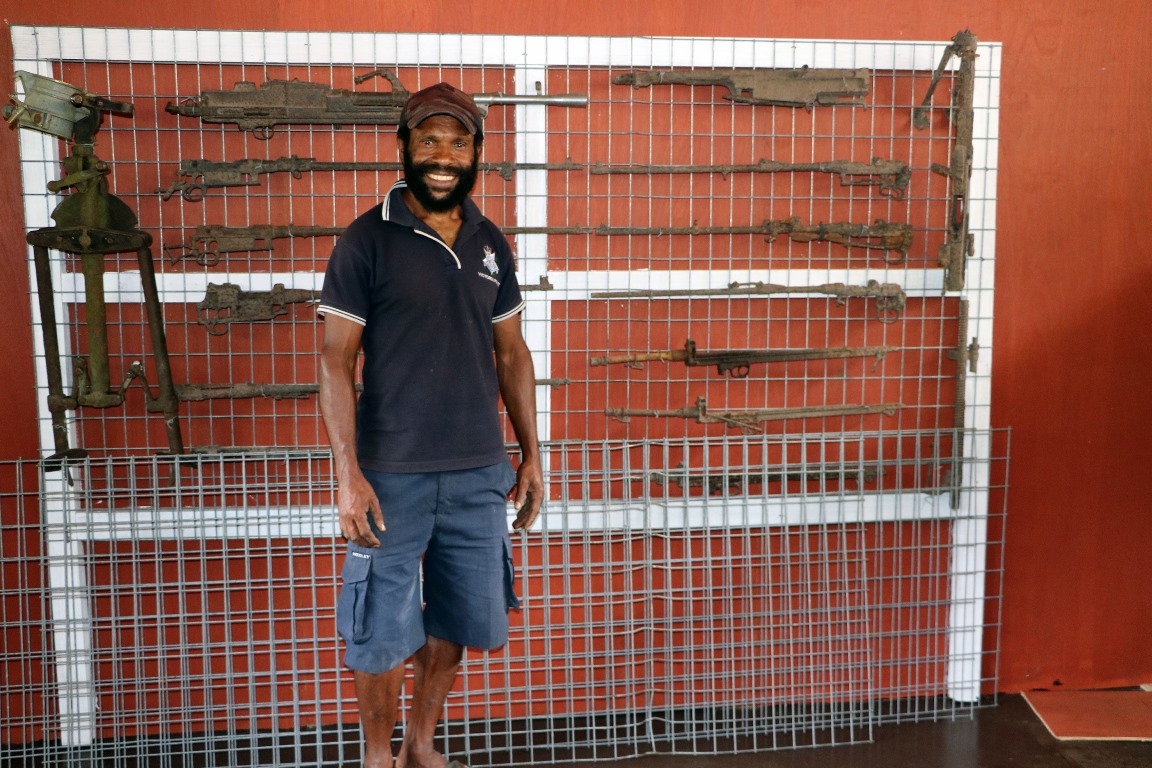When trekkers reach the half-way point along the 96-kilometre Kokoda Track, it is the friendly face of Gaksy Siosi that often greets them in the village of Efogi.
The 32-year-old father of six runs a campsite and guest house with his wife Deffy and is the curator of the local museum – all initiated by his father Siosi Laimo.
“It was my father that started all of what I have and own today. He was one of the first locals who opened the Kokoda Trail for trekkers,” recalls Gaksy.
“He started off by clearing the Brigade Hill site and started collecting war artefacts, just for his own collection as souvenirs. My father was then told by a tour operator to put up a hut for him and his trekkers to stay in whenever they trek through Efogi village to stay overnight.”
The Brigade Hill land owned by his family is where fierce battles were fought between Australian and Japanese forces in 1942 during World War II.
Gaksy decided to take over the running of the campsite, guesthouse and collection of artefacts when his father moved to Port Moresby to live with relatives 20 years ago.
“When clearing the land to make gardens, I found more of those relics, so I collected them and added them to my dad’s collection.”
Around a hundred artefacts were originally displayed on bamboo shelves in a small hut made of bush materials, with visiting trekkers charged a small fee to enter.
In early 2018, representatives from the National Museum and Art Gallery (NMAG) visited Efogi and took photos of Gaksy’s display of war remnants. Back in Port Moresby, NMAG discussed plans to build community museums along the Kokoda Track as part of a Military Heritage Plan for the region.
Community consultations were then held in Efogi and two other villages – Buna and Alola – to build community museums in each location that would protect the artefacts found after World War II, drive local tourism and provide livelihood opportunities for villagers.
“There were continuous discussions with the community to get the whole community’s consent, as this was a community project to be managed and owned by the community, with funds shared amongst the community,” remembers Gaksy.
“I did not know that the artefacts collected by my father would later be stored in a house called a museum and would be important to other people until a few years ago when I was visited by people from the national museum who told me of the work they wanted to do.”
With the support of Australia through the Kokoda Initiative and in partnership with NMAG, a permanent community museum and trade centre was built in Efogi in early 2019 with solar lights installed by the Kokoda Track Foundation.
The building was officially opened on ANZAC Day by the Governor for Central Province Hon. Robert Agarobe MP and special guests – Dr Andrew Moutu, Director of the National Museum and Art Gallery, Brigadier General Gilbert Toropo, PNG Defence Force Chief, Australian Senator the Hon. Anne Ruston and Lieutenant General Rick Burr Australian Chief of Army.
“I am very happy because I now have a modern built museum that is well set-up and has proper labelling of all the collections,” said Gaksy.
“The museum is a big thing here at Efogi that has attracted a lot of trekkers so far. Every trekker that comes through Efogi village has not missed out on visiting the museum.”
More than 200 trekkers have been through the museum since it officially opened in April, with many signing the guest book and leaving positive comments about the new facility.
Visiting trekkers pay a 10 Kina fee to enter the museum. Local women use the open-air trade and community centre attached to the museum to sell souvenirs and food to the estimated 3,500 trekkers who pass through the village each year.
For further information, including access to related materials, please contact the Australian High Commission media team: +675 7090 0100

Gaksy Siosi stands proudly in front of his favourite collection of gun parts from World War II displayed in the Efogi community museum..
